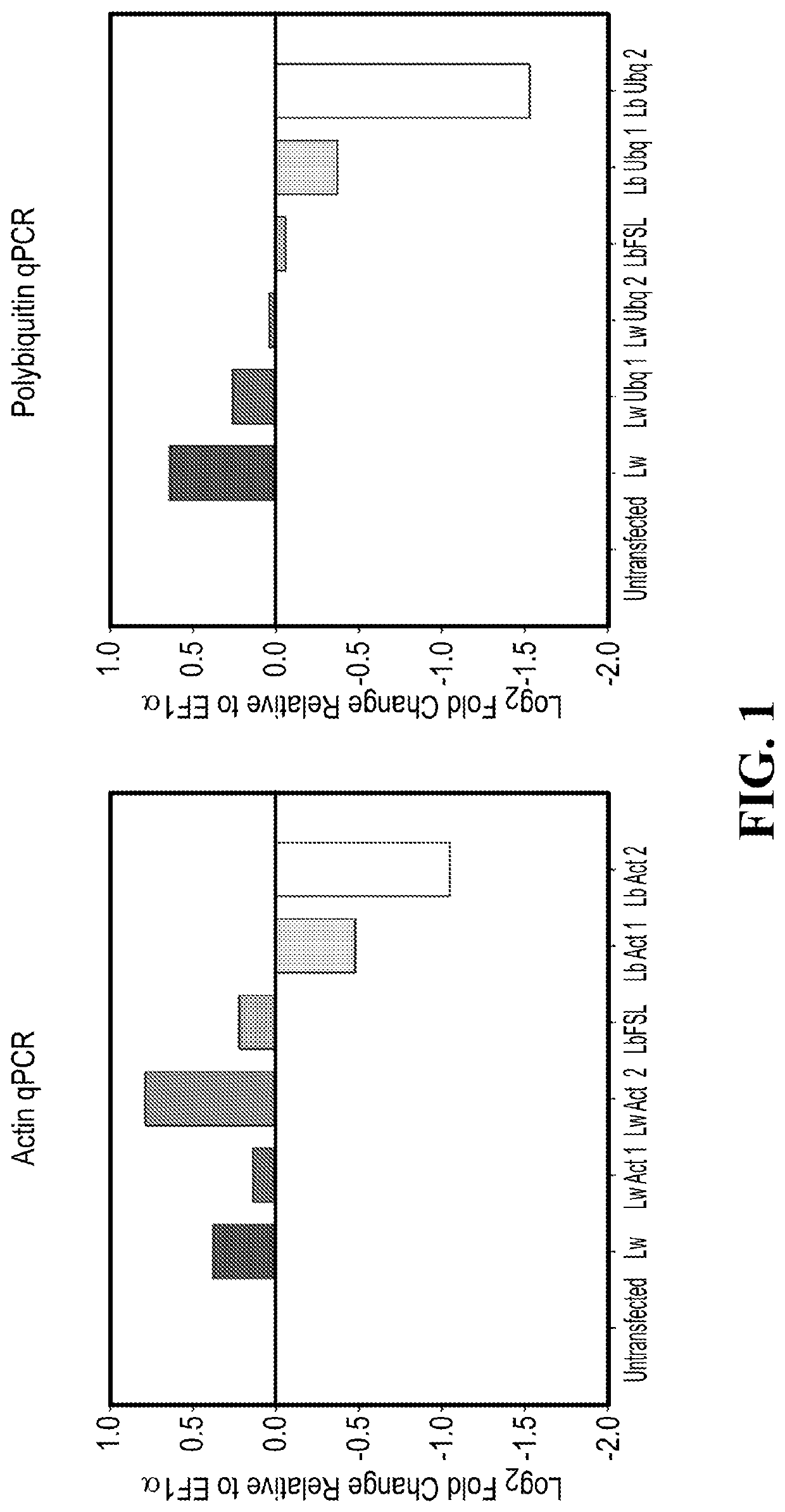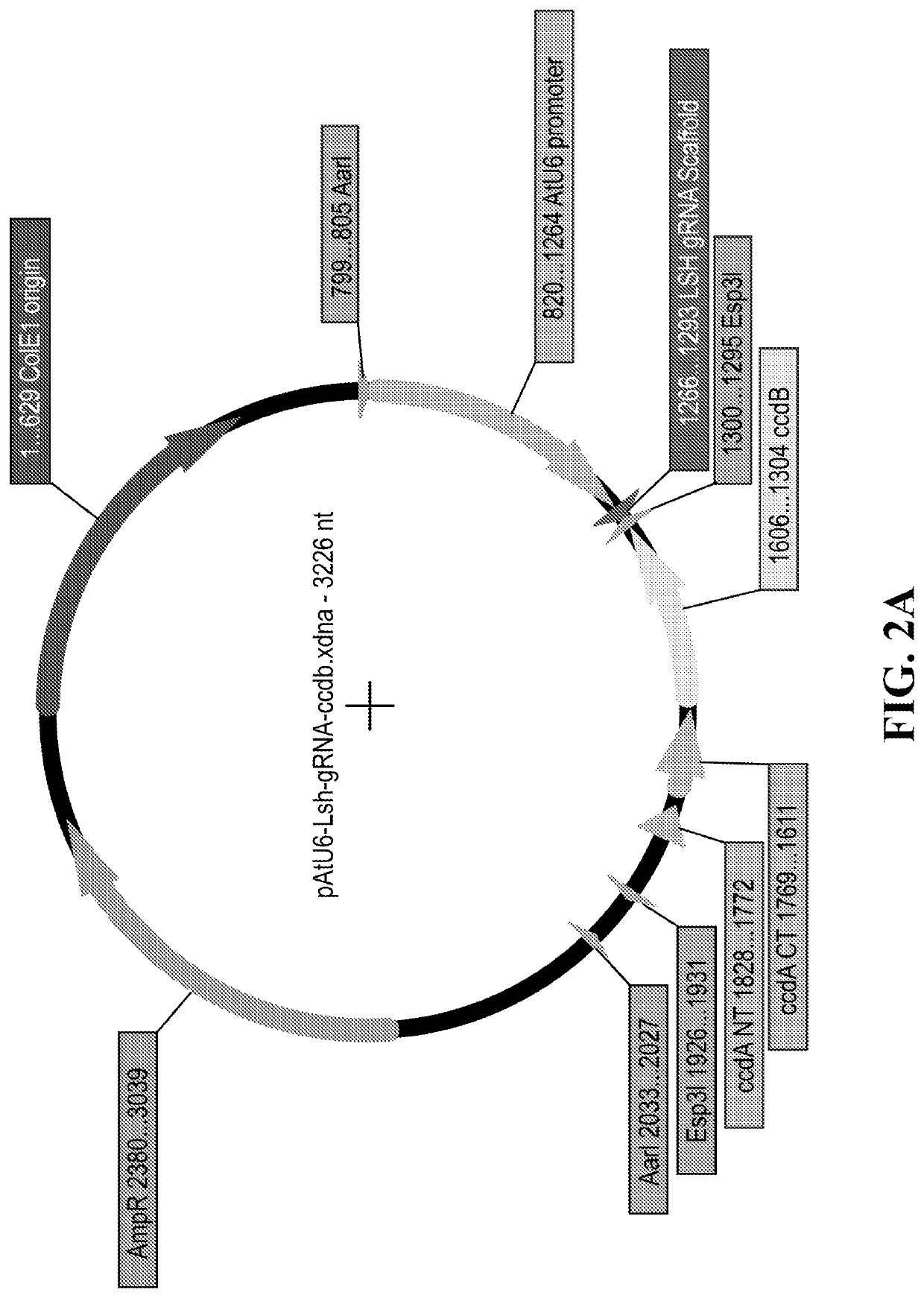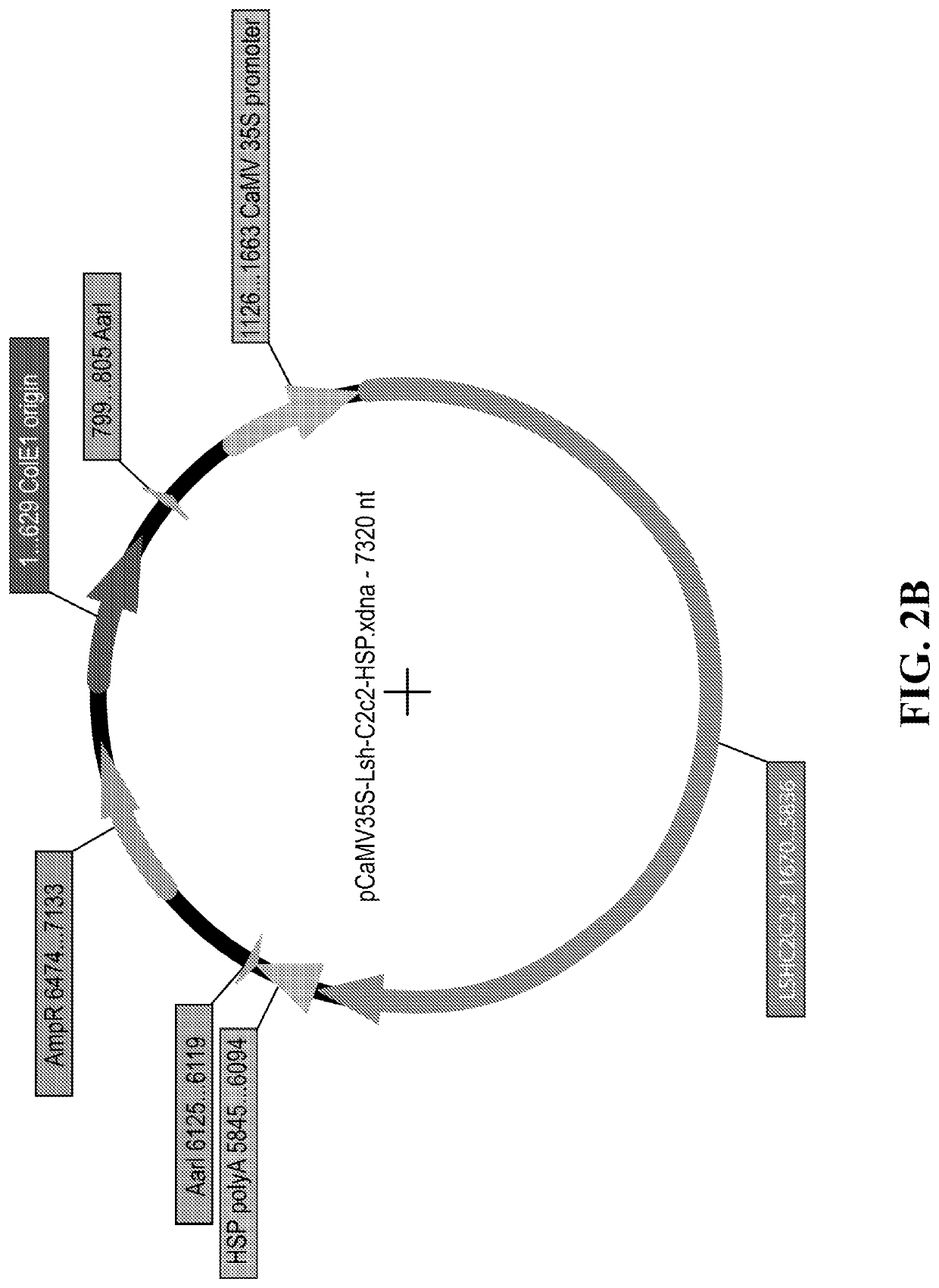Crispr-systems for modifying a trait of interest in a plant
a technology of plant traits and systems, applied in the field of plant traits, can solve the problems of limited approaches to combat plant diseases, major losses in crop yield and quality, etc., and achieve the effects of reducing improving the production of biologic products, and increasing the expression of at least one gene produ
- Summary
- Abstract
- Description
- Claims
- Application Information
AI Technical Summary
Benefits of technology
Problems solved by technology
Method used
Image
Examples
example 1
Production of a Plasmid Vector for Expressing a C2c2 Variant and gRNAs
[0691]The C2c2 sequences of Lw (from Leptotrichia wadei) and LbFSL (from Listeriaceae bacterium FSL M6-0635) (see Table 2 above) were provided in a plasmid with EF1alpha promoters driving the NES-tagged C2c2 with mCherry fused to the C-terminus. The C2c2 coding region were obtained therefrom (removing the NES and mCherry sequences and adding in a STOP codon).
[0692]These C2c2 coding regions were PCR amplified and ligated into plant expression vectors comprising a rice actin promoter or dicot 35S promoter.
[0693]Additionally, vectors encoding the gRNAs shown in Table 3 below were generated. The vector comprised a rice U6 promoter or the Arabidopsis U6 promoter. The vectors were designed from provided sequences by annealing oligos encoding the desired gRNA sequence.
[0694]The vectors can be constructed analogously as in Zahir Ali, et al., Genome Biology, 2015, 16:238.
[0695]For transformation, these vectors were combine...
example 2
Down-Regulation of Target RNA in Plant Cells
[0726]Rice protoplasts were prepared (Chen, S., L. Tao, L. Zeng, M. E. Vega-Sanchez, K. Umemura, and G. L. Wang. 2006. A highly efficient transient protoplast system for analyzing defence gene expression and protein-protein interactions in rice. Mol. Plant Pathol. 7:417-427. doi:10.1111 / j.1364-3703.2006.00346.x., incorporated by reference) and co-transfected with 15 μg of DNA expressing each C2c2 variant along with 15 μg of DNA encoding the guide RNA cassette. Four different guide RNAs were tested, two targeting actin and two targeting polyubiquitin, both highly expressed genes. Forty eight hours after transfectation, the protoplasts were lysed with Trizol (Life Technologies) according to the manufacturer's instructions for total RNA isolation. Ten nanograms of total RNA was used for each real time quantitative PCR reaction using the SuperScript III Platinum SYBR Green One-Step qRT-PCR Kit (Life Technologies). Primers specific for actin, p...
example 3
Down-Regulation of Target RNA in Plant Cells Using Further C2c2 Orthologs
[0731]Preparation and transfection of rice protoplasts was performed as described in Example 2 using the constructs for the different C2c2s as described in Example 1. The guide RNAs used targeted EPSPS and HTC, respectively. RNA isolation and quantification were carried out as described in Example 2. Relative expression levels of EPSPS and HTC were analyzed with Ef1α serving as an internal control.
[0732]The following gRNAs and PCR primers were used:
[0733]The relative expression data obtained in the plant cells from 3 independent experiments are shown in FIG. 3.
[0734]The results show the following: The C2c2 variants tested here are Lw2 (L. wadei F0279) and Lbm (from Lachnospiraceae bacterium MA2020), LbNK179 (from Lachnospiraceae bacterium NK4A179), Ca (from [Clostridium] aminophilum DSM 10710) and LbFSL (from Listeriaceae bacterium FSL M6-0635). The results shown in FIG. 3 demonstrate that the two target transc...
PUM
| Property | Measurement | Unit |
|---|---|---|
| Composition | aaaaa | aaaaa |
| Cell death | aaaaa | aaaaa |
| Affinity | aaaaa | aaaaa |
Abstract
Description
Claims
Application Information
 Login to View More
Login to View More - R&D
- Intellectual Property
- Life Sciences
- Materials
- Tech Scout
- Unparalleled Data Quality
- Higher Quality Content
- 60% Fewer Hallucinations
Browse by: Latest US Patents, China's latest patents, Technical Efficacy Thesaurus, Application Domain, Technology Topic, Popular Technical Reports.
© 2025 PatSnap. All rights reserved.Legal|Privacy policy|Modern Slavery Act Transparency Statement|Sitemap|About US| Contact US: help@patsnap.com



